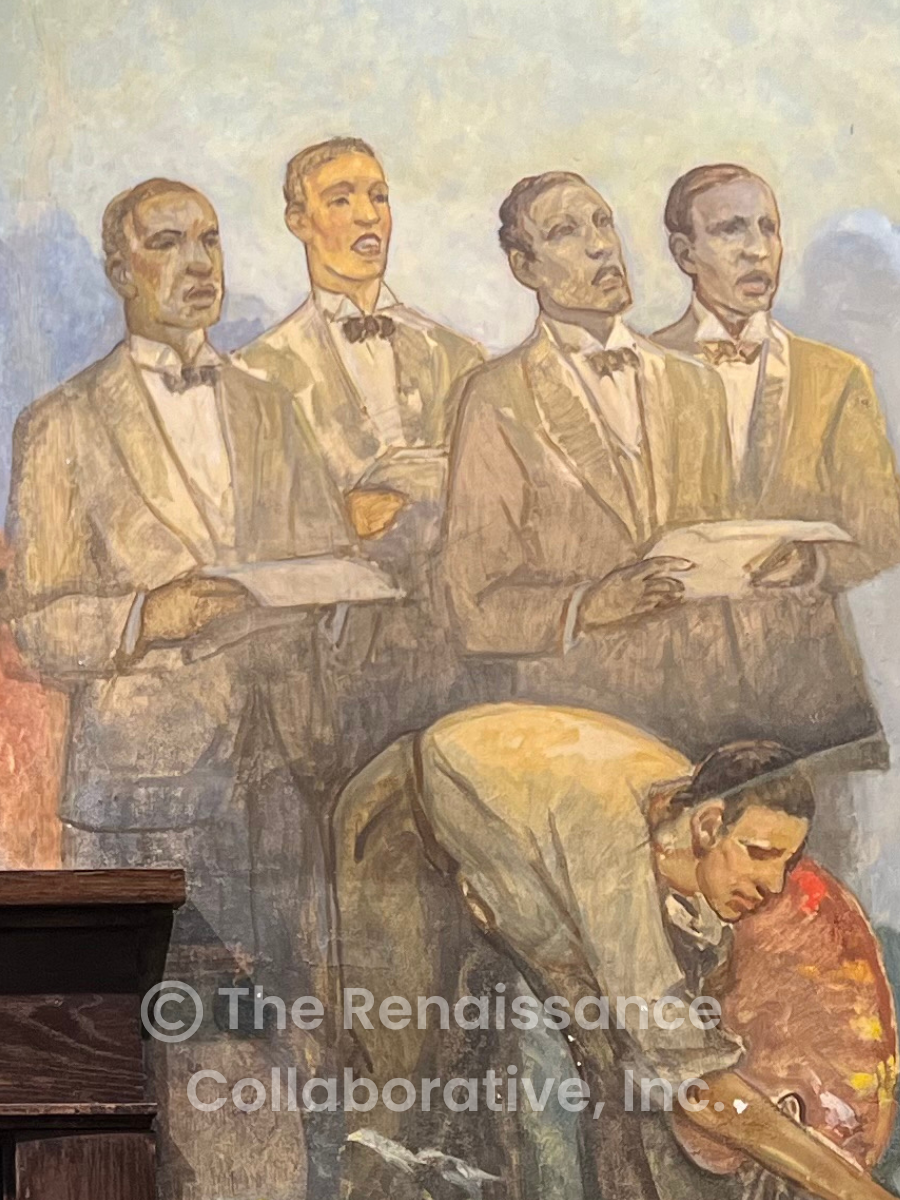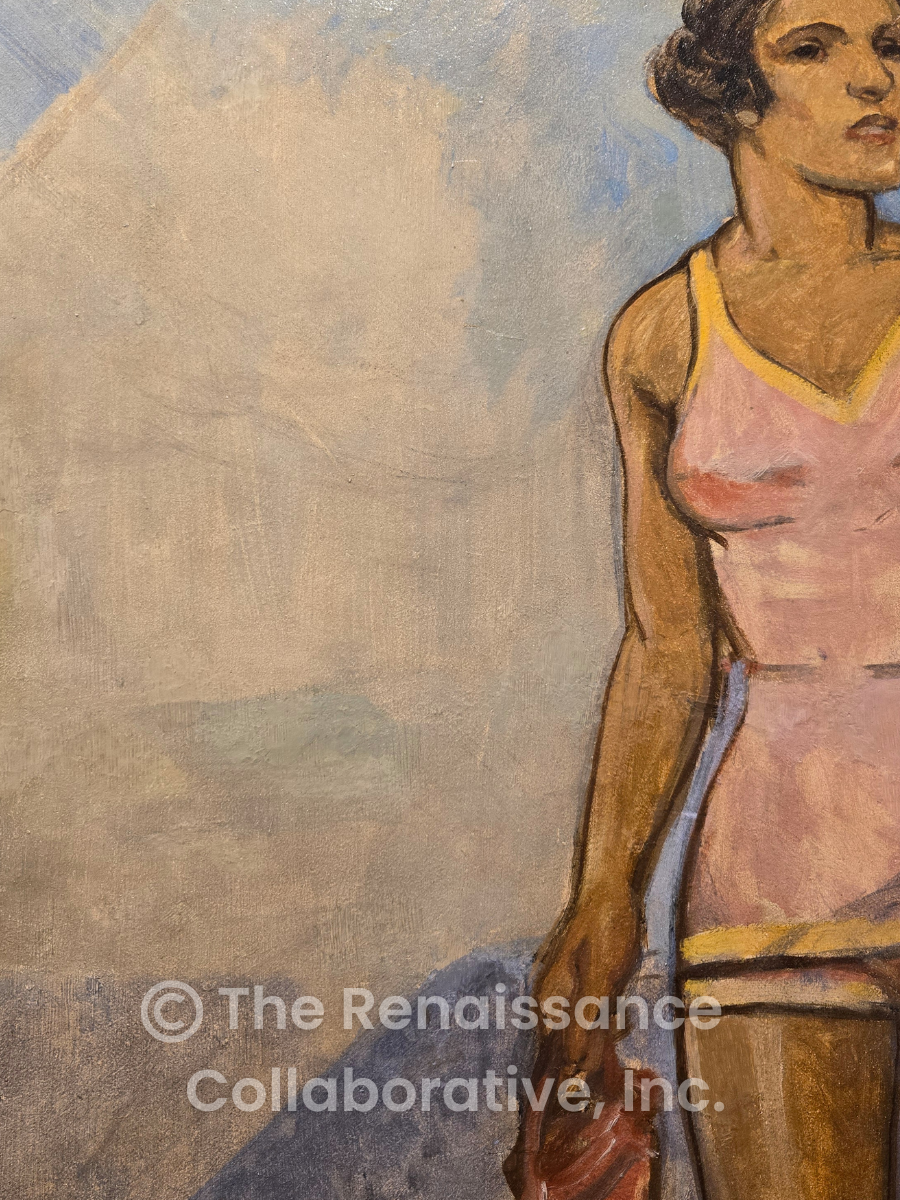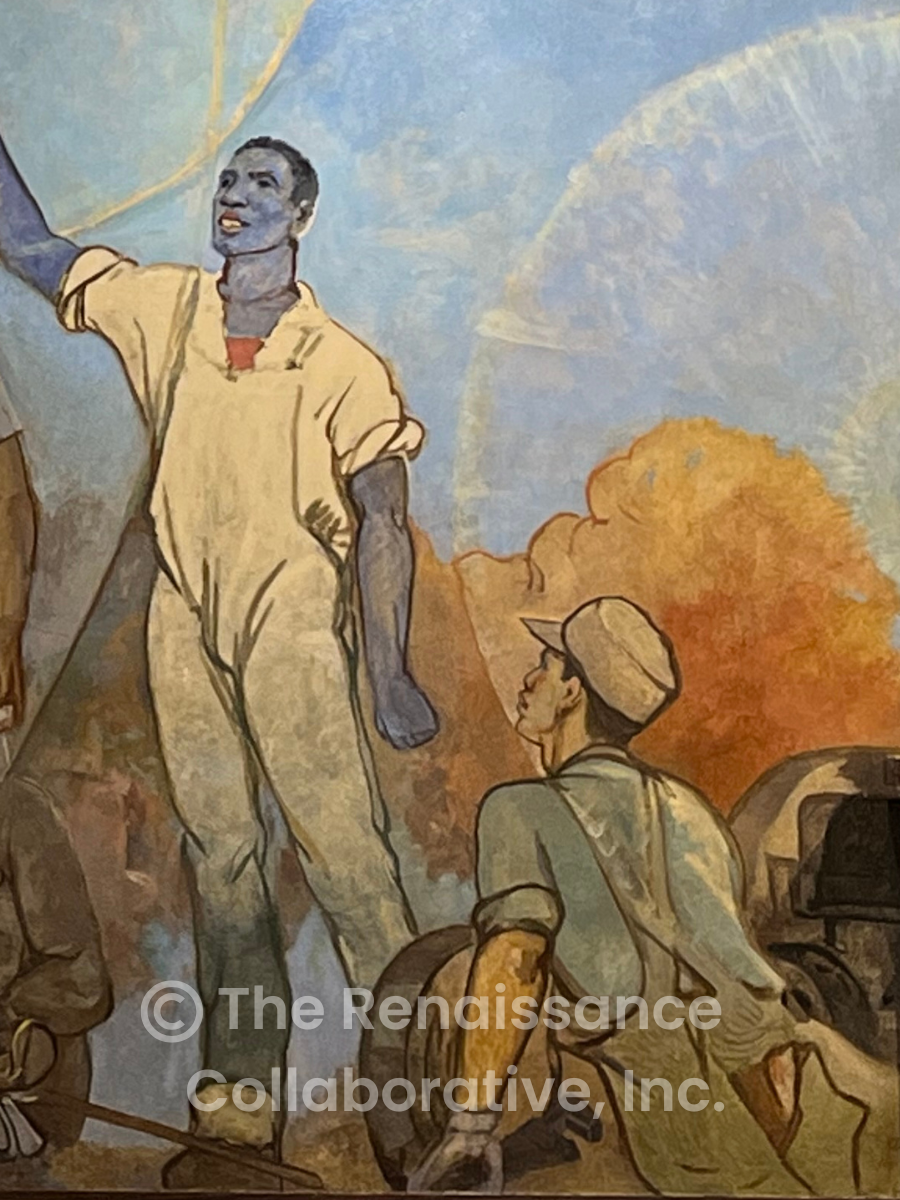Uncovering Hidden Layers
The Restoration of Chicago’s ‘Mind, Body, Spirit’ Mural
The “Mind, Body, Spirit” mural is an illustrious piece of art located within the former Wabash Y – a presence that literally takes people’s breath away, often eliciting audible gasps as they enter the room. Its beauty even earned recognition from WTTW’s Geoffrey Baer, who featured the building in his series Most Beautiful Places in Chicago.
The Conservation Center finished the mural’s second conservation in January, elevating its brilliance to new heights. The effort, which spanned nearly two months and engaged the expert conservators working full days, provided a rare opportunity to observe the mural in detail and uncover fresh insights into its creation.
Painting Under Pressure: A Mural of the Depression Era
One of the most surprising discoveries was how quickly and hastily the mural appears to have been painted. Conservators explained: “The mural itself is very gestural—there’s not a heavy build-up of paint. The coats on the choir figures are so washy, they’re not even close to complete.”
Although it may seem unexpected for such an acclaimed work, this was not unusual for murals created during the 1930s. Painted in 1936 during the Great Depression, artists often worked rapidly with limited, inexpensive materials. As one conservator noted, “In the 1930s, people were not painting for longevity—they were painting from paycheck to paycheck.” Since this was a direct commission from the YMCA, the artist W. E. Scott had to provide his own materials, giving him even more incentive to economize.
The consequence of this thin paint application is a mural more vulnerable to damage. Conservators identified areas of pentimenti (the emergence of earlier strokes or images painted over), revealing the artist’s evolving thought process. For instance, the swimmer originally had an outstretched arm that was later repositioned to her side. In another case, a faint round form in the cityscape marks the original placement of the central figure’s head. Had Scott not shifted this figure, the mural would feel entirely different.
Mistakes That Tell a Story
Additional details suggest how hurriedly the mural was executed. For example, while Scott moved the central figure to the center, it remains slightly off alignment with the triangle emblem—an unusual and visually unsettling choice for a trained artist. Similarly, the auto mechanic’s chin aligns with the arc behind him, creating a tangency—a condition in art where two forms touch in a way that appears accidental and flattens perspective. Such imperfections hint at the rushed pace of creation.
The Mystery of the Blue Figure
One detail that has long puzzled viewers is the blue complexion of the torch-bearing figure. Some speculated the color resulted from the loss of upper paint layers. While this may be true for other damaged figures on the edges of the mural, conservators confirmed that the torch-bearer was always painted blue. Nearly all of his pigment remains original, applied thickly and vibrantly—closer to ultramarine than any faded undertone. Why Scott chose this striking hue remains a mystery.
A First-Class Conservation
Despite its imperfections, the mural holds exceptional cultural significance and has undergone a first-class preservation. Over seven weeks, conservators painstakingly cleaned away surface grime, secured cracks in plaster, stabilized flaking paint, filled in areas of paint loss, and applied a protective varnish designed to last nearly a century.
Importantly, all conservation materials are archival and removable. Materials just applied will undoubtedly age differently than the original and discolor, just as the previous conservation work had. Future conservators will be able to safely remove and re-treat the mural as needed.
Two Conservation Techniques: Past and Present
The first conservation of the mural used tratteggio, a European method of filling paint losses with fine vertical lines. From a distance, the lines blend, but up close, they make restorations visible—acknowledging the mural’s history of damage. This method was chosen because the lead conservator at the time trained in Poland. The result gave the work a more “sketchy” appearance.
The recent conservation employed invisible retouching, the preferred approach in the United States. This technique aims to make repairs indistinguishable from the original, allowing viewers to see the work as Scott intended. The effect is dramatic: cracks from paint shrinkage were filled seamlessly, reviving the impression of Scott’s brushstrokes nearly a century later. Some tratteggio remains, but it now blends so well it could pass as original, adding another subtle layer to the mural’s history.
A Living Landmark
This shift in conservation method has transformed the way the mural is experienced. Instead of feeling like an aged relic patched together for survival, the “Mind, Body, Spirit” mural now radiates with the immediacy of Scott’s hand. Viewers no longer focus on cracks or faded repairs; they see motion, gesture, and color as if the artist had just stepped away. It is this renewed vitality—not just its inspiration—that makes the work feel alive, and why it so fittingly belongs in a building we call a “Living Landmark.”









